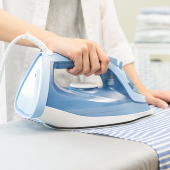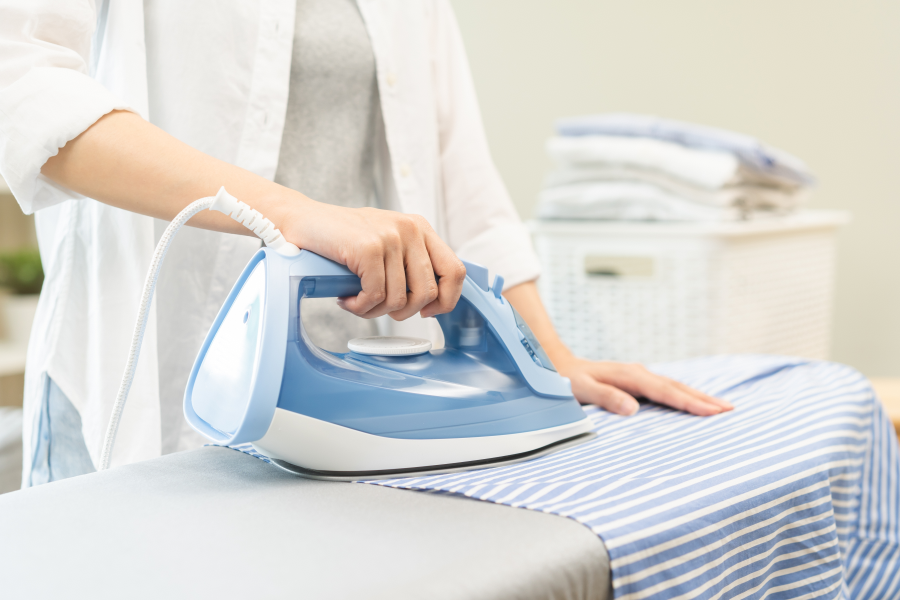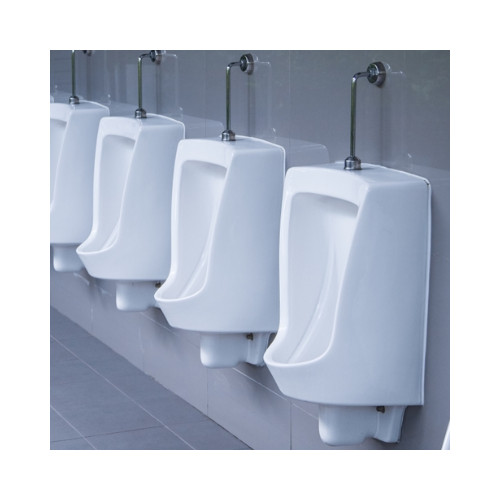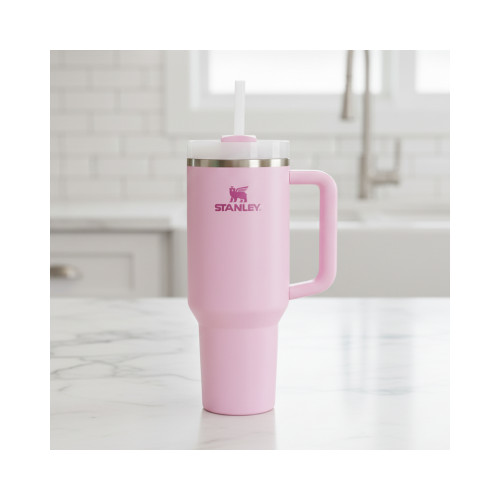
How to Clean an Iron
Ironing is one of the least popular chores in the UK. For many, it’s a daunting task due to the time it takes. After finishing your weekly laundry, you might find yourself ironing work shirts, office blouses, and uniforms to get ready for the week ahead.
A common frustration is accidentally marking your clothes while ironing. Many have experienced the panic of discovering a dirty smudge on a freshly cleaned white shirt.
Before you start cleaning your iron, make sure it’s unplugged and completely cooled down.
Although there are specially formulated sticks and sponges for cleaning irons, you can achieve the same results with common household items that you probably already have. These include vinegar, baking soda, and toothpaste. Follow this handy guide to keep your iron clean and reduce one source of frustration from your routine.

How to Clean an Iron Soleplate
The part of the iron that touches your clothes is called the iron plate, or soleplate. With regular use, it can develop burn marks, stains, and limescale build-up. Always check your iron plate before you start ironing. If there are any burns on the plate, heating the iron and pressing it onto freshly washed fabrics can transfer those burns, which can be disastrous, especially before a job interview! Therefore, knowing how to clean an iron soleplate is essential for protecting your clothes!
Soapy Water
For a light clean, scrub your iron with a sponge dipped in soapy water. Avoid using wire wool as it can damage the plate.
Toothpaste
If the soleplate remains dirty after using soapy water, try toothpaste. Once the iron is dry, apply a small amount of toothpaste to the plate and rub it in with an old rag or tea towel. Wipe away the toothpaste with a damp sponge or cloth.
Vinegar
Vinegar is effective for removing stubborn marks or sticky residue. Place newspaper underneath to protect stone or wooden surfaces. Follow these steps to clean an iron soleplate with vinegar:
-
Mix equal parts white vinegar and salt in a saucepan.
-
Warm the mixture gently, but do not let it boil. Remove the pan from the heat before you start cleaning.
-
Wear rubber gloves to protect your hands from the heat, then dip a sponge into the salt-and-vinegar solution.
-
Carefully scrub the iron’s soleplate.
While the methods for cleaning burnt iron marks and sticky residues are generally similar, you might find some techniques work better for specific issues.
How to Descale an Iron
If you notice chalky white marks on your iron soleplate, these could be limescale deposits from the water. You'll need to know How to descale an iron to solve this issue. This residue can also become sticky, making it hard for the iron to glide smoothly over your clothes and potentially leaving marks on your freshly laundered items. It’s time to descale!
The clear sign of limescale build-up is white residue around the steam vents. Here’s how to clean those vents effectively.
Descaling an Iron with Vinegar
- Mix equal parts distilled white vinegar and distilled water, then pour the mixture into the iron’s water tank.
- Use a toothpick or toothbrush dipped in pure vinegar to scrub away any limescale build-up.
- Turn on your iron and set it to steam for about five minutes.
- And there you have it—a descaled iron!
Descaling an Iron without Vinegar
If you prefer not to use vinegar, you can opt for a specialised iron descaling product such as Oust, designed to swiftly and effortlessly restore small household appliances to their optimal condition in just 6 minutes. Simply follow the instructions on the packaging to effectively remove the limescale.
Descaling with Oust
Heat the iron until it is warm to the touch, then unplug it (ensure the iron is switched OFF during descaling). Follow these steps:
- Pour the contents of the sachet into a jug and add it to the iron's water chamber.
- Fill the chamber with water and set the iron to the steam position (do NOT turn the iron on).
- Place the iron in an empty plastic bowl with the warm plate facing down.
- Gently shake the iron until the solution begins to drain through the steam holes.
- Leave the iron in this position for 6 minutes (or until the solution is empty).
- If your iron has a spray button, briefly pump any remaining solution through it.
- Rinse the iron thoroughly with cold water, then drain and dry it.
- To ensure all solution is removed, briefly iron a spare piece of fabric before using the iron again.
Now that you know how to descale an iron, get started with cleaning right away! Whilst you're at it, why not check out our great range of laundry cleaning products?
Stay Connected
Stay connected and be the first to know about our latest products, special offers, and exciting news:The Cleaning Blog
Want to learn more about cleaning? From the latest cleaning and hygiene news to handy how-to guides, why not check out our most popular blog categories.Stay Connected
Stay connected and be the first to know about our latest products, special offers, and exciting news:












